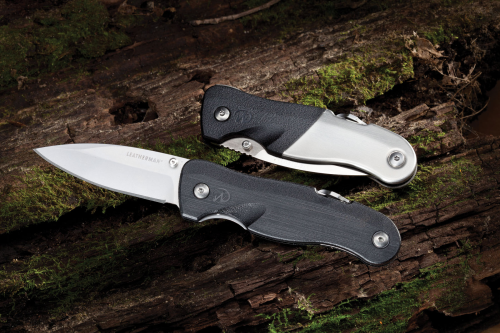
When Leatherman Tool Group, Portland, Oregon, USA, decided to introduce a new folding knife line with improved features, it had a range of requirements. The knives needed to be lightweight and dent resistant, have the ability to stand up to an array of chemicals (from oils to insect repellent), and look good.
"Handles (or scales) made of metal couldn't meet the varied criteria," explains Michael Duncan, Leatherman's Sourcing Engineer. "We considered using a carbon fibre material, but found that the cost, including the frequent need for machining after moulding, would have made the knives too expensive to produce."
Leatherman discussed the project with moulding partner KASO Plastics Inc, which recommended using an RTP 200 Series very long glass fibre reinforced polyamide (PA) 66 composite from custom thermoplastics compounder RTP Company, Winona, Minnesota, USA.
"We knew of a couple of materials that had the desired properties, but the RTP Company material leapt right out at us," says Dean Christensen, Vice President of Sales at KASO Plastics. "The price difference was huge; about a quarter of the cost of carbon fibre."
The material met all of our criteria," adds Leatherman's Duncan. "And, it was instrumental in allowing us to bring two new knife lines, Crater and Expanse, successfully to market."
The Expanse line features a hybrid metal/plastic handle.
"An important aspect of the RTP Company material was that it mechanically bonded well with the metal component in the mould after a simple pre-surfacing treatment," notes Duncan.
The RTP 200 Series very long fibre thermoplastic composite is said to have been easy to process and worked out well for both knife lines.
According to RTP, the key to obtaining the best performance from a very long fibre thermoplastic is good tooling that is designed and built to align the fibres correctly during processing.





